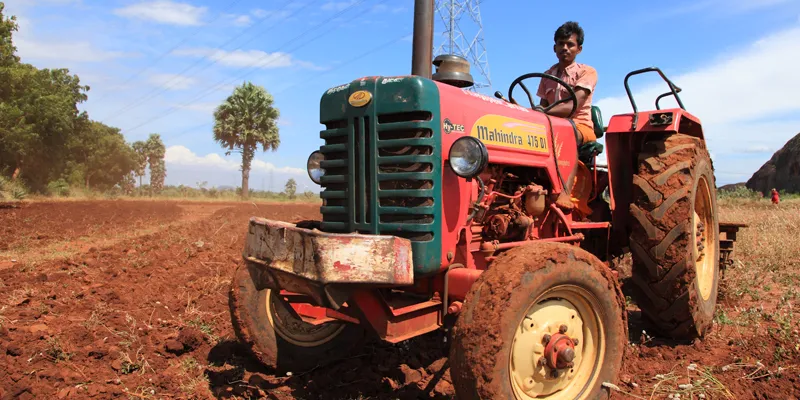Why the government must enable every Indian farmer to become an entrepreneur
After industry, the agricultural sector contributes the maximum to India’s GDP and is deemed the primary occupation for a majority of the masses, according to our textbooks. If this is the case, why has it been faring so poorly in the past decade?
With the growing rate of farmer suicides that has been witnessed since the beginning of 2015, one has to wonder why the government, despite its many claims, hasn’t sprung up and adopted any drastic measures to help change the helpless situations the farmers find themselves in, leading them to turn to the noose.
Despite India being an ‘agricultural country’, most of its youth are darting away from the sector, looking instead to take up menial jobs in big cities. For the past decade, only 15 million jobs have been made available to the teeming billions on the prowl, during the 10-year reign of the UPA government. Investment proposals received by DIPP for new projects to be set up in 2014–15 showed a possibility of creating a maximum of 4.11 lakh jobs — not nearly enough to meet the needs of the majority of the population.

Image : shutterstock
Although Finance Minister Arun Jaitley has spoken at length about pushing reforms to lift economic growth so as to create more job space, what he hasn’t mentioned in his speeches is the fact that the agricultural industry has the potential to create massive gainful employment which could help recover our sluggish economy. To top that, no measure has been implemented by the government to help educate and train the existing farmers in the happenings of the sector. 80 percent of the public expenditure going to agriculture is in the form of input subsidies like fertilisers, power, and irrigation, with only 20 percent being direct investments in agriculture.
In 2013, Gene Campaign, a well-known research and advocacy organisation working on food, nutrition, and livelihood security identified several matters of concern including the despondent situations farmers were in. Most of these centred around mismanagement and faulty execution of agricultural processes by the concerned authorities and departments, among which rising input costs, lack of grassroots level agricultural extension systems, increasing fragmentation of holdings, poor irrigation facilities, and scams were a few. As a consequence, the productivity and profitability of the sector have reduced, and younger generations have also been scared away. The campaign declares that there is a strong need for public sector investment to focus on building efficient value chains and link farmers to the market.
Although Jaitley had spoken about prioritising the process of increasing farm incomes last year, no measure has been seen from the government’s side to rescue the farming community from economic distress. Studies by the Commission for Agricultural Costs and Prices (CACP) have shown that the net income per hectare from cultivating wheat and rice even in the frontline agricultural state of Punjab is about Rs 3,000 per hectare, leaving them with no prospective savings and barely enough to scrape through to maintain a whole family.
It’s time to introduce Indian farmers to the market and turn them into businessmen. In this aspect, India should take a leaf out of Africa’s book, where small-scale farmers are turning into entrepreneurs. IFAD-funded PAMA — the Agricultural Markets Support Programme — enables small-scale farmers in Boane, 30km south of Maputo, to cultivate popular cash crops in accordance with the rehabilitated irrigation schemes of the region. The latter is working to the advantage of the province of Maputo, where existing irrigation infrastructure is being used to improve market linkages and increase agricultural production.
As stated by Mario Quissico, a marketing specialist from AGEMA, “Before, the farmers did not have any know-how, they did not know which crop would be more marketable. Now farmers know what the market needs. They negotiate directly with the buyer and cultivate to meet demand. As a result, their activity is profitable and sustainable.”
It was the PAMA team that got AGEMA on board with their campaign to train and provide support for the farmers. Under them, the farmers are organised into associations and taught how to link up with the big buyers without going through an exploitative middleman. They also provide fertilisers and improved seedlings to the farmers, enabling them to produce high-value products, which they then directly sell to the various chains — supermarkets, restaurants, hotels, and more. The programme facilitated the creation of farmers' associations, organised marketing committees, and equipped farmers to conduct market research.Each association has a president, a treasurer, and a secretary.
Through providing support through marketing and production specialists, along with supplying two supervisors who provide continuous technical assistance to the farmers, the associations are doing their remarkable bit in making sure that the farmers have a strong voice in the society and economy, and learn how to look after their produce and themselves efficiently.
Heralding in this practice was no easy feat. Young people in Africa too, viewed agriculture as a dead-end career that entailed a life spent labouring it out on the fields. However, it has been the aim of the various associations and groups involved to prove that with the right investments to support entrepreneurs in agriculture, profitable careers could await Africa's young population. They provide for better higher education programmes in agriculture, as well as business training courses that equip young people with the skills to run small businesses. They campaign for the government and independent donors to invest in these institutions and infrastructure as well as rallying for policies and financial incentives to be put in place to inspire a generation of agriculture entrepreneurs.
Africa has taken a massive leap of faith so that they can give their farmers a life worth living. Isn’t it time India does the same?







